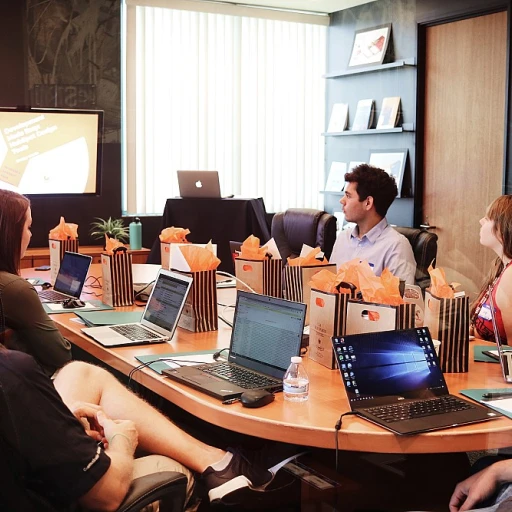Understanding Applicant Tracking Systems
Decoding the Role of Applicant Tracking Systems
Navigating the job search landscape can be a daunting task for job seekers and understanding how Applicant Tracking Systems (ATS) operate is crucial. These systems serve as a digital gatekeeper for employers, streamlining the hiring process and significantly impacting the way candidates’ resumes are processed and organized.
ATS are designed to simplify the work of hiring managers and recruiters by managing the influx of applications. These tools allow companies to efficiently filter through countless job applications, identifying candidates whose resumes match the job description closely based on pre-set criteria. However, despite their efficiency, ATS platforms often add complexity to the job search for many applicants.
Many job seekers may not realize the importance of tailoring their resumes to align with the ATS criteria. When a resume is not optimized for the system, it risks becoming lost in the pool of submissions, regardless of the applicant's qualifications or skills.
Moreover, these systems can vary from one company to another, each with unique settings and configurations, further complicating the job search. For more insight into the specifics of these systems, understanding their limits, and ensuring that applicants can effectively demonstrate their skills, you might want to look into
ATS platforms. Connecting your resume with these systems can help ensure a smoother process during your job search.
The Impact of ATS on Job Seekers
Decoding ATS: Challenges Faced by Job Seekers
Navigating an ATS system can be a daunting task for job seekers. These systems are designed to streamline the hiring process for organizations but can sometimes pose significant barriers to potential candidates.
Most ATS platforms evaluate resumes based on keywords drawn from the job description, significantly impacting how resumes are filtered. This system's efficiency can exclude qualified candidates if their resumes are not optimized with the right criteria. As such, understanding how keywords work in ATS tools can be paramount to landing a job.
Moreover, a considerable number of tracking systems rely on algorithms that measure various elements like qualifications and work experience. However, this process can overlook human elements that a hiring manager would typically consider during a standard review.
Another critical aspect is the time factor. Job seekers often invest substantial time and resources tailoring their resumes for different job applications, only to encounter frustration with ATS systems that dismiss their submissions due to minor mismatches in formatting or wording.
Additionally, candidates may face obstacles in the tracking and feedback phase, as many systems lack the capability to update applicants on their application's status. This lack of communication can lead to a poor candidate experience, leaving talents in the dark about where they stand in the hiring process.
To improve hiring prospects, job seekers can benefit from strategies that optimize their resumes for tracking systems, ensuring relevant keywords are included in their profiles and that their resumes align with the job description. For more on how to craft the ideal resume to enhance the application process, check out this comprehensive guide on
crafting an effective resume for a Training Enablement Specialist role.
Common Pitfalls in ATS Optimization
Overcoming ATS Challenges in the Hiring Process
Applicant Tracking Systems (ATS) are a staple in modern job applications, streamlining the process for hiring managers but often presenting hurdles for job seekers. Understanding these challenges can significantly improve one's chances of navigating the ATS landscape effectively.
In essence, an ATS acts as a gatekeeper, filtering through countless resumes to identify qualified candidates. This filtering process can inadvertently result in inadvertent rejection of potentially exceptional applications. A common pitfall is the reliance on keyword matching, where a resume may be discounted if it does not precisely match specific job description terms.
Another issue arises from stylistic choices in resumes and the systems’ inability to consistently recognize and interpret various formats. For instance, highly decorated resumes often fail at making it past ATS platforms due to their complex layouts and graphics, as these elements may not be read correctly by scanning systems.
Additionally, ATS tools vary across companies, meaning that the same resume could pass through one system but be filtered out by another. This inconsistency requires applicants to adapt their applications not just to the job descriptions, but also to the capabilities of the tracking system being used.
Recruiters play a pivotal role in this process, often tweaking ATS settings to better capture suitable resumes. Yet, the intricate nature of these tools can sometimes stifle even seasoned recruiters, who must balance compressing vast applicant pools while striving to improve hiring by identifying the potential in detailed applications.
To effectively combat these challenges, job seekers should prioritize creating ATS-friendly resumes. This includes using clear, concise language, avoiding uncommon fonts or excessive graphics, and explicitly matching the resume’s language with the job posting. It also helps to familiarize oneself with how to maximize visibility by understanding the hiring grounds they are entering.
For more insights into launching a successful staffing agency and adapting to evolving candidate sourcing environments, refer to
launching successful staffing agency strategies.
Strategies for Navigating ATS Effectively
Streamlining Your Approach to Overcome ATS Challenges
Navigating the maze of Applicant Tracking Systems (ATS) can be daunting for job seekers, but adopting a thoughtful strategy can significantly improve the odds of success. Here are some key tactics to consider:
- Optimize Your Resume: Craft a resume that aligns with the job description, incorporating relevant keywords naturally. This increases the likelihood of your application being flagged as a match by ATS platforms. Avoid overloading your resume with too many keywords, ensuring it maintains a clear structure and readability.
- Tailor Each Application: Customize your resume and cover letter for every job application. Tools and systems used in ATS prioritize applications that closely match the posting, so highlighting specific skills and experiences makes your application stand out.
- Format Wisely: Use simple layouts that ATS software can easily parse. Ideally, opt for a clean, text-based format and avoid unusual fonts or graphics that may confuse the tracking systems.
- Learn and Adapt: Each rejection provides insights. Analyze what might have worked or not in your previous applications and adjust your approach continuously. Understanding the nuances of ATS systems is crucial in refining your application strategy over time.
- Stay Informed: Keep abreast of the latest trends in ATS technology and candidate sourcing. Knowledge of emerging features and tools enhances your ability to navigate the evolving job market landscape.
Remember, these strategies are not only about beating the system but also about improving your visibility as a qualified candidate in the hiring process. Collaborating with recruiters, leveraging professional networks, and being open to feedback can further enhance your candidate experience in a competitive job search environment.
The Role of Recruiters in the ATS Process
The Critical Role of Recruiters in Navigating ATS
Applicant Tracking Systems (ATS) have become an essential component of the hiring process, but it's crucial to understand how recruiters fit into this digital landscape. While systems and tools unquestionably streamline parts of the job application process for companies, the human touch remains indispensable. Here's how recruiters play a pivotal role in balancing technology and personal engagement in the ATS process:
- Bridging Technology and Human Insight: Recruiters act as an interpretive bridge between the technology of ATS platforms and the nuanced needs of job seekers and hiring managers. They possess the skills to decipher complex job applications and resumes that a system might overlook, ensuring qualified candidates don't slip through the cracks.
- Enhancing Candidate Experience: Although ATS tools can improve hiring efficiency, they often lack the empathy and personal touch that candidates seek during their job search. Recruiters step in to provide a more approachable and supportive experience, reaching out to candidates whose resumes might have been auto-filtered due to mismatched keywords or formatting issues.
- Providing Feedback and Guidance: Navigating the maze of ATS can be daunting for job seekers. Recruiters offer valuable feedback on how to tailor resumes to increase visibility within these systems. They guide candidates in aligning their skills with the job description, thereby increasing their chances of progressing to interview stages.
- Alleviating System Pitfalls: A well-optimized ATS resume is just one component of successful job applications. Recruiters help job seekers tackle common pitfalls, such as poorly designed templates or incompatible file formats, ensuring that their applications are ATS-friendly.
- Facilitating Effective Communication: Despite the apparent efficiency of ATS in tracking applications and candidate details, it is the recruiter who often ensures the communication between candidates and companies is clear and coherent. They clarify any uncertainties that arise during the applicant tracking process.
Recruiters continue to be a vital link in the chain, enhancing the overall candidate experience and increasing the quality of hires. In an industry constantly evolving with new tools and technologies, the role of a recruiter remains fundamentally human-centric, offering insights, support, and guidance to those navigating the complex job search landscape.
Future Trends in ATS and Candidate Sourcing
Emerging Trends and Innovations
The world of applicant tracking is continuously evolving, ushering in a myriad of trends designed to improve the hiring process for both recruiters and job seekers. As companies seek to enhance their ATS tools, they are turning to cutting-edge technologies that streamline applications and improve the candidate experience.
- Artificial Intelligence and Machine Learning: These technologies are transforming ATS platforms by offering sophisticated algorithms that can better match qualified candidates with job descriptions. AI can also help in managing large volumes of resumes, ensuring that no qualified applicant slips through the cracks.
- Predictive Analytics: By leveraging data analytics, ATS systems can predict hiring trends and candidate success rates, allowing hiring managers to make informed decisions and optimize the process. This not only helps in reducing time spent on unsuitable applications but also enhances the overall efficiency of the system.
- Enhanced Communication Tools: New ATS systems are incorporating tools that facilitate real-time communication between candidates and recruiters, ensuring a seamless interaction that can significantly improve the candidate experience. These tools allow for a more responsive and engaged process, which is crucial in maintaining a positive relationship with potential hires.
- Mobile Compatibility: With the rise of mobile job searches, ATS systems are becoming more mobile-friendly. This enables applicants to submit their resumes and track applications anytime, anywhere, making the job search process more flexible and accessible.
As technology continues to advance, the integration of these innovations not only signifies the progression of ATS systems but also highlights their pivotal role in shaping the future of hiring. Keeping these trends in mind, companies can enhance their approach, ultimately resulting in a more efficient and candidate-friendly hiring process.













